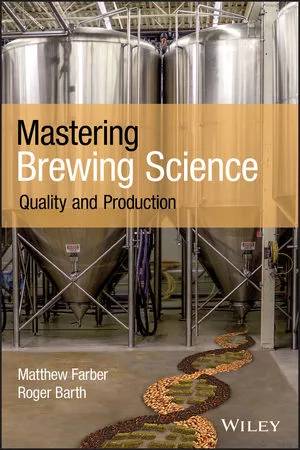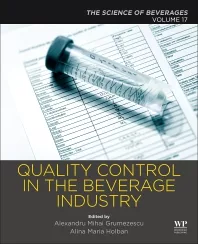Lab testing equipment focuses on quality assurance, automation
Beverage manufacturers protect consumers' health by ensuring product safety
The process to take a beverage concept and bring it to fruition includes numerous checks and balances throughout the formulation, packaging and distribution operations. If proper quality assurance (QA) is not followed it can lead to an inconsistent finished product — or worse — a contaminated one, forcing a beverage-maker to pull product from the shelves. As consumers grow weary of products after a recall, beverage manufacturers recognize the importance of lab testing equipment to ensure safety from contamination in its operations.
Experts say that ensuring safe processing and packaging of ready-to-drink (RTD) carbonated and non-carbonated beverages is crucial in the global consumer packaged goods (CPG) industry.
The constantly changing variations of beverage packaging formats and materials also has impacted the growing number of testing procedures to “assure the most perfect product quality,” says Johannes Angres, president of Steinfurth Inc., Marietta, Ga.
“We’ve been following the testing needs and trends in the industry for more than 50 years,” Angres says. “Our instrument developments were — and are — focused on more automation and the possibility for outsourcing of the testing activities from the laboratory to the filling line.”
He notes that Steinfurth’s compact package analyzer (CPA) is a customized modular extendable mini lab that can be installed and operated directly on the bottling line by the same employees in charge of the bottling machinery. “In the latest customized solution, our mini lab is able to measure and monitor the following beverage quality parameters: torque, CO2 content, fill level, brix, pH and conductivity,” he says.
A master module, preferably connected to a barcode scanner, collects the sample entry, and then the CPA reads the sample codes, informs the linked instruments about which procedures will be used and collects the measuring results through one central Ethernet interface directly onto a PC network, Angres explains.
Raleigh, N.C.-based MicroThermics Inc. offers rapid-control heating through Aseptiwave microwave heaters, which safely process a wide variety of products, including teas, juices, milk and milk-based drinks and more.
MicroThermics offers two laboratory ultra-high-temperature (UHT)/high-temperature-short-time (HTST) processors, a direct/indirect model processor (DIPW) and a high viscosity hybrid (HVH), all of which which provide an accurate simulation of production processes using UHT Steam Injection, UHT Indirect or HTST pasteurization, notes MicroThermics Inc. Vice President David Miles.
“Our new, small-scale microwave UHT/HTST processing systems provide rapid, controlled heating of products without heating surfaces or steam injection,” Miles says. “This results in longer run times, no scorching of the products typical with traditional [systems], focused microwave heaters, excellent flavor retention and more consistent texture.”
Miles also notes the ease of use and flexibility of the equipment. “We can incorporate virtually any unit operation our clients need, including custom hold tubes, inline homogenizers and ultra-clean filling,” he says. “…Our clients can go from the lab to production in a single step with little or no reformulation of products.”
Improving quality
QA has long been a driver of lab testing equipment. But value, efficiency, flexibility and innovation also are critical, experts note.
In addition to its CPA concept, Steinfurth offers a variety of automatic QA instruments, including a CDA CO2 tester for operator-independent sample preparation and measurement; a torque monitor sensor with onboard CPA Master functionality; and a LCS lab scale carbonator for cost-efficient, single-sample carbonation for beverages and packaging in research and development (R&D). It also provides automated packaging testing equipment for bottles and closures based on standard test procedures, Angres says.
MicroThermics’ Miles notes that the new Food Safety Modernization Act (FSMA) requires labs to create food and beverage product samples with documented protocols in place that prove the samples are safe, all of which are subject to inspection by the U.S. Food and Drug Administration (FDA).
While continuously maintaining QA, the lab testing equipment of the future also must keep pace with the beverage industry’s changing needs, Miles says.
“If a lab processor used for R&D does not provide an accurate simulation of commercial processes, then the company is literally wasting money …since the results in the lab cannot be translated to the plant,” he says. “In the future, we may see advancements in control systems and laboratory filling as well as custom processors for special requirements such as project management office, the U.S. Department of Agriculture and the FDA’s Current Good Manufacturing Practice (cGMP) standards.”
Steinfurth’s Angres anticipates that the “industrial revolution 4.0” will significantly impact QA instrument developments.
“With more and more individual packaging and the wide range of packaging forms and materials — which are often different for each brand owner or global market — quality assurance tools will require more customization without increasing the cost and time efforts of beverage facilities,” he says. “This will only be possible with highly adaptive, intelligent tools working in close, but easy-to-handle interaction to their operators — a true machine-human interface.”
Looking for a reprint of this article?
From high-res PDFs to custom plaques, order your copy today!






